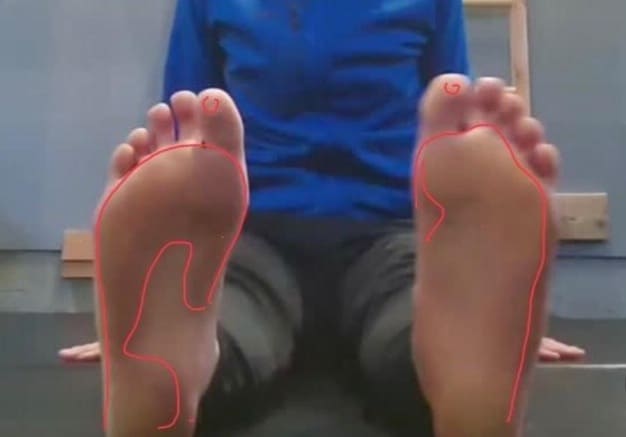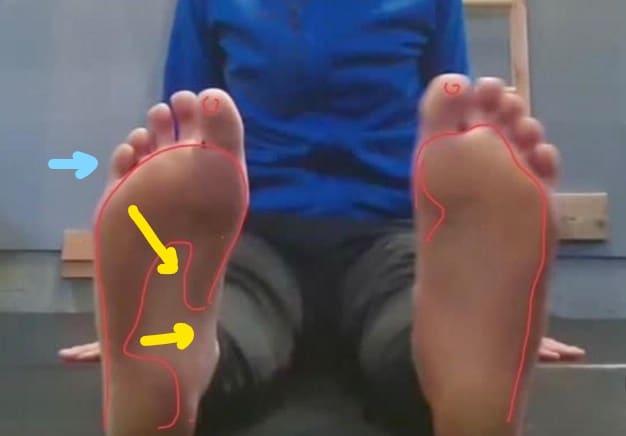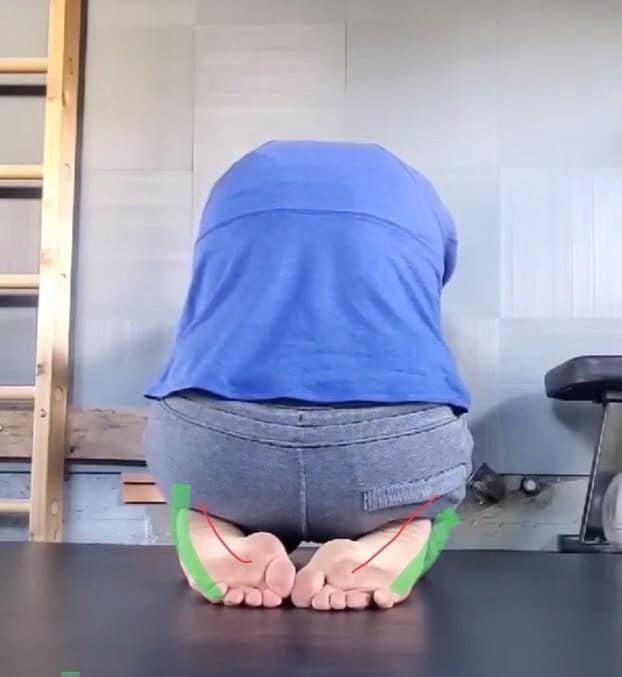
Foot Valleys & Gulches
Adarian Barr does this thing. Well, first he does his thing — take a snapshot of what is going on in a way that only he seems to notice. Then he’ll send it to me without words and see what I do with it. Enter the feature photo. For whatever reason, I saw what had happened and knew what needed to be done. From his sole outline, I saw that the foot had ‘cinched’, pulling the pinky in and and the bottom of the foot toward the medial ankle. To try and reverse this, I sought to spread the sole diagonally through the pinky.

No wonder there was a loss of ankle pronation.
If the first met takes over and twists in, there’s no place for ankle to go.
I also had trouble loading the pinky side of the foot tripod (inner ball of foot, outer ball of foot, and heel), which further told me (apart from fifth soreness and pain) that re-learning to put and keep pressure there would help the foot autocorrect.
The following is exactly what I did, and my oh my the difference it made.
1. Putting weight into the outer ball of foot.
Lifted so it’s the only thing touching the ‘ground’, flat surface when competing with inner ball of foot, getting the toes out of the way by actively and passively lifting them up, and via pivot-twist: spinning foot through toes and heel to torque the foot to turn counter-clockwise:
2. Using the ankle drop in (pronation) to assist in counter-clockwise twist.
3. Toes Up vs. Toes Out
This one was the least expected. Loading the mega inner ball of foot caused the toes to lift. Once I could load the outer the toes spread wide. Further evidence that finding ways to load the outer was key.
The following was the first feedback photo I was sent (about two months ago) that I didn’t understand. He had been saying that my foot has gotten more “curved”. “The red line is the valley of the foot and the balance point.” I noticed that my pelvis on the left also happened to be lifted.

Remembering this, I went back to the position to see if I could feel what I was now after and knew how to feel/ evaluate.
4. Twisting through the Heel
Comparing sides. Functional right first. On the left, I had to find the right loading vector (out instead of just down) to get a similar torque output through the forefoot.
5. Reinforcing Fifth Met Load and Counterclockwise Twist
Challenging outer ball pressure by changing position and adding load. This first one was massive. All the hamstring I never get to (this is also my ACL repaired side that cut off a piece of my hamstring for the graft), the deep stuff. I noted when the toes kept up and when they dropped. Fingers helping the spread. You can also see the point where I inadvertently find the running form Adarian so often posts as optimal.
With weight, loading the opposite arm (cross pattern) seemed most natural, manipulating the scapula as a variable point of contrast. Overhead, I use the lengthened load to assist in making the desired rotation — the ribs and hips systematically help spread things into the externally rotated foot and pronated ankle.
If you dig these kinds of posts and sleuthing of issues, the precursor to this piece looking at systematic (whole body) observations and manipulations can be found here.



